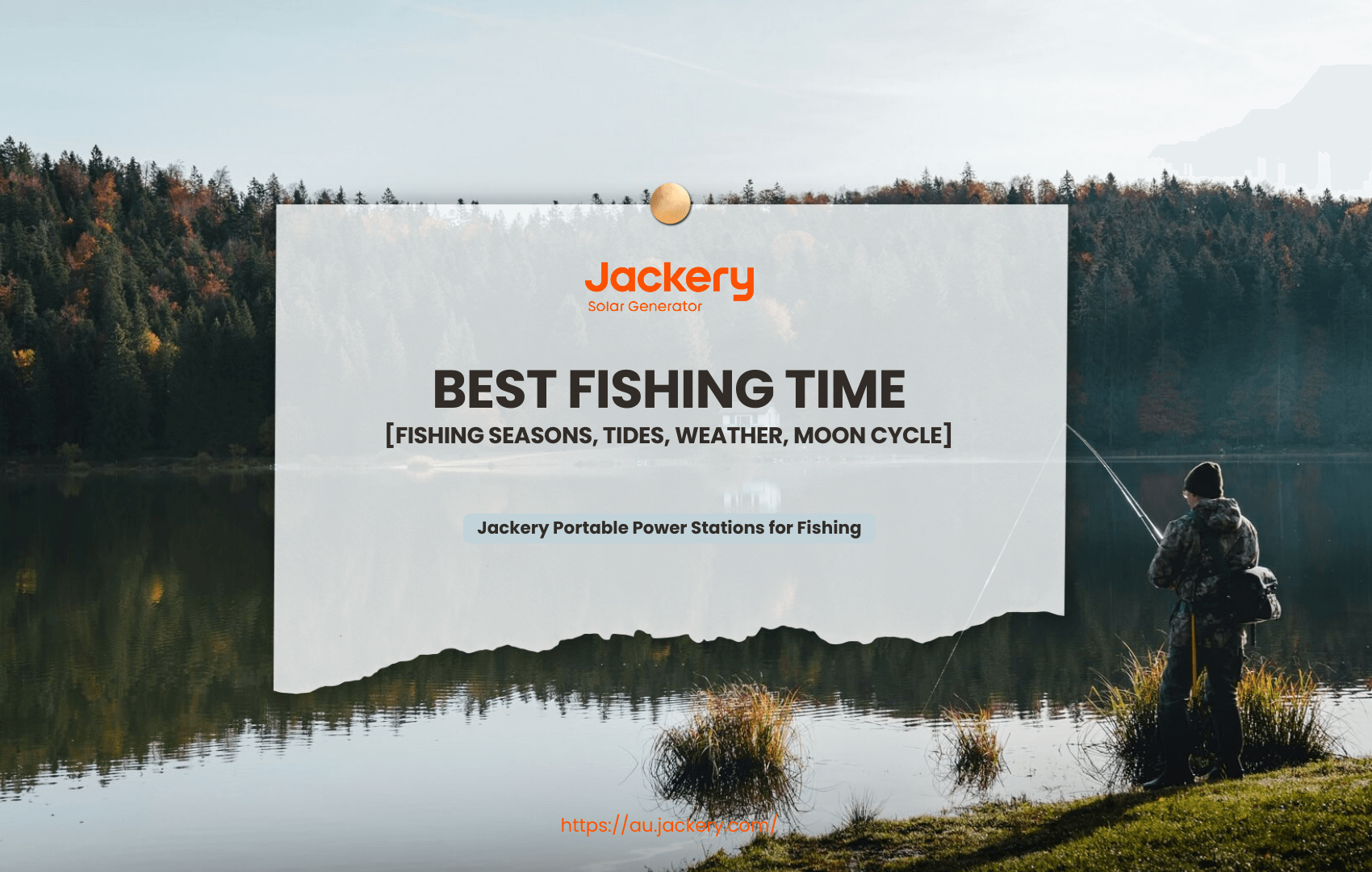|
Key Takeaways: |
|
• Fly fishing is a sport that involves casting a fly line with a fly rod and reel and trying to catch fish by using bait. • You need to purchase licenses before fly fishing in Australia offline or online. • Choosing appropriate gears and lures and mastering fly fishing techniques are essential. • There are five of the best spots for fly fishing in Australia. • For fly fishing, we recommend Jackery Explorer 300 Plus and 600 Plus to charge your essential electronics on the go, such as your phones, electric fish finders, etc. |
What Is Fly Fishing?
The sport of fly fishing is launching a fly line using a fly rod and reel to catch fish using bait, usually artificial lures resembling insects. Although it has been a popular activity for thousands of years, trout fishing in Australia's alpine streams is the most common association with it.
Due to Australia's distinct environment, fly fishing is the only way to capture a variety of fish species, including tarpon, barramundi, redfish, bass, and trout. Anglers may face distinct challenges and enjoy breathtaking landscapes while pursuing these marine species.
You can fish for wild brown and rainbow trout in various waterways, from pristine mountain streams to little meandering lowland rivers; your fly fishing guide will customise your excursion.
Fly Fishing VS Regular Fishing
Fishing for rough fish species is known as regular fishing. Rough fish are not fit for human consumption, and catching them for fun is not very enjoyable. Bait fishing is a standard method used to catch coarse fish.
Fly fishing includes launching a lightweight fly, a synthetic bait designed to resemble insects or other tiny creatures. The casting technique carries the fly to the intended location, which depends on the weight of the line instead of the fly.
When Is the Best Time for Fly Fishing in Australia?
Australia's varied topography and climate cause regional variations in the fishing season. In Australia, the colder months of late fall to early spring are often the most significant times to fly fish since these are the times when water temperatures are most conducive to trout activity.
Victoria: April to November
New South Wales: October to June
Tasmania: August to May
South Australia: Year-round with the best fishing from May to September
Western Australia: April to September
Queensland: Due to the subtropical climate, there is no defined season, but trout are more active in the cooler months.

What Fish Can You Catch for Fly Fishing in Australia?
Australia's vast and varied scenery is perfect for an angler to see many kinds of fish. It is known for its rough mountains and deserts, and its temperatures are good for many different types of fish. Some parts of the country are great for fishing in freshwater, while others are great for fishing in saltwater in places like the Great Barrier Reef and other faraway places.
Bass: Bass are the most popular sport fish in Australia. You can find them all over the country, with different species native to other areas. Macquarie Bass, Murray Bass, Grownup Bass, and Australian Bass are a few of these.
Trout: Australia is home to both sea trout and brown trout. These fish look much like their relatives in North America and Europe but differ slightly. One example is the Red Trout, which is a grayling!
Redfish: Redfish, which are often caught for sport, can be found all along the coast of Australia. They usually bite live bait or hooks, but flies can also see them. Redfish are known for being tough fighters, so if you hook one, prepare for a fight!
Barramundi: Considered the "bread and butter" fish of Northern Australia, migrating between saltwater and freshwater, and known for their strong fight.
What Fly Fishing Gear Do You Need?
Fly fishing is a widely favoured sport that numerous individuals appreciate for its tranquillity and difficulty. To maximise the benefits of this sport, appropriate equipment is essential. The following fly fishing gear and accessories are necessary for a basic fly fishing setup to commence the activity.

The following are the must-have fly fishing gear:
Fly fishing rods
Fly fishing lines
Fly fishing reels
Fishing Net
Leader
Nipper
Tippet
Flies
Pliers or hemostat
The following are the nice-to-have fly fishing gear:
Portable cooler
Sunglasses
Sunscreen
Waterproof boots
Tacklebox
The following are the no-need-to-have fly fishing gear:
Neoprene waders
Fly box
Fishfinders
How to Fly Fish?
Fly fishing involves many sections. This guide will show the detailed steps, from choosing the right rod to casting and fly fishing.

Step 1: Choose the Right Rod
The necessary length of the fly rod is often dictated by the dimensions of the body of water you intend to fish. Most fly rods range from 6 to 10 feet long for conventional trout, bass, and panfish fly fishing—items shorter than 6 feet are designed for particular situations, such as little wild-trout streams. Lengths over 10 feet are utilised for casting over extended distances in expansive rivers and ocean environments.
6-8 Feet: Fly rods measuring 6 to 8 feet are ideal for smaller streams since they facilitate navigation in places congested with bush and trees.
8-10 Feet: Fly rods of 8 to 10 feet are ideal for streams, rivers, ponds, and lakes since they provide longer casts and enable precise targeting at greater distances.
10-12 Feet: Rods measuring 10 feet or more are optimal for expansive bodies of water to enhance casting distance. Numerous fly fishers employing "European" or "Euro" Nymphing techniques utilise fly rods measuring 10 to 12 feet in length to achieve greater distances and increase the separation between themselves and the fish.
Step 2: Adjust the Fly Fishing Reel
For novice fly fishermen, it may be surprising that the fly reel is the least critical piece of equipment. Fly reels are fundamentally polished containers for fly lines. It is uncommon to successfully reel in fish while fly fishing for bass and trout. In fly fishing, we engage fish by stripping the line.
This is generally applicable to smaller freshwater species such as trout and bass. The reel assumes greater significance as you engage in fly fishing and develop into a dedicated fly fisherman. Consequently, you will target larger fish where an effective drag system is essential for managing forceful runs.
Step 3: Pick the Fly Fishing Line
Selecting the appropriate fly line is crucial for successful fishing. A high-quality fly line significantly impacts your fishing experience. Fly lines consist of a braided nylon core encased in plastic and filled with microbubbles to enhance buoyancy. Inexpensive fly lines often absorb water and submerge, complicating casting and presentation. This can be exasperating while attempting to master the techniques of fly casting.
Floating fly lines are the predominant type for fly fishing, targeting trout, bass, and panfish. They assist in maintaining your flies' position above the water, counteracting the line's weight that would otherwise submerge them. Floating fly lines facilitate mending and strike detection, enabling an effective "dead-drift" presentation.
Sinking and weighted fly lines are utilised in fly fishing ponds, lakes, and rivers to position streamers and nymph flies at feeding depths.
Selecting the appropriate "weight" fly line is straightforward. Generally, one selects a weighted fly line corresponding to the fly rod's weight. If your fly rod is a 6-weight, you should utilise a 6-weight fly line.
A novice technique for achieving greater casting distance without extensive experience is selecting a fly line heavier than the corresponding fly rod. If you possess a 6-weight fly rod, you should utilise a 7-weight fly line. The additional weight of the fly line assists novice fly anglers with loading the rod and executing a fundamental forward cast.
Step 4: Casting
Utilising a fly rod is not exceedingly challenging if one comprehends the distinctions between fly fishing and traditional fishing. When casting a conventional rod and reel, the weight of the lure is utilised to flex the rod. The energy from the rod is conveyed to the lure and launched over the river.
In fly fishing, heavier lures are absent. We are casting little, weakly weighted flies. Consequently, we must utilise the weight of the plastic-coated fly line to flex or load the fly rod. The energy accumulated in the fly rod facilitates the presentation of flies and enables extended casts. Comprehending this notion and the rationale behind a weighted fly line facilitates the learning of casting. The focus is transferring momentum and energy from the fly rod to the line's delivery.
A. Back Cast: To execute a back throw, position your rod tip near the water's surface as feasible. Ensure that there is no excessive length of a fly line extending from the tip of the fly rod. Commence with 3 to 6 feet of fly line.
I often employ the analogy of imagining a little tomato at the tip of my rod while instructing an overhead cast. While executing my back cast (with the rod tip positioned low to the water and devoid of slack), I will initiate the motion gradually by elevating the rod, subsequently increasing the speed, and finally executing a sudden halt near my ear, propelling the tomato off the rod's tip to splatter against an imaginary wall at head height right behind me.
B. Pause: The subsequent step in casting a fly rod is to pause. Allow the fly line to unfurl behind me and achieve total straightness. There is no disgrace in allowing the fly line to contact the water behind you. This generates tension instantaneously, which loads the rod and prevents tangling. The final phase of a fly cast involves delivering the fly to the intended target.
C. Forward Cast: The forward cast is the third and final phase of casting a fly rod. Once your fly line has fully extended behind you in mid-air, accelerate and direct the fly rod tip forward towards your intended target, executing a sudden halt. You should perceive the momentum transferring from the fly rod to your fly line.
Comprehending these mechanics and mastering a fundamental overhead cast enables fly fishermen to execute various casts, such as the roll cast, reach cast, and additional techniques required for diverse fly fishing situations.
Your yard is an excellent venue for practising casting, even without a fly. Upon mastering the basic forward cast, you can refine your single and double-haul casts. These techniques are more intricate but facilitate casting over greater distances.

Step 5: The Roll Cast
When fishing small spring streams or swift western rivers, it is frequently impractical to wade sufficiently away from the bank to execute a backcast and deliver the fly. The roll cast is essential in confined fishing scenarios where trees or obstacles prevent a back cast.
A roll cast is a forward cast executed without a preceding backwards cast. Raising the rod to initiate your cast eliminates slack from your line. This is particularly crucial when angling from a raft or drift boat. When the boat approaches your line, frequently crossing it, a roll cast can be employed to distance the line from the boat and eliminate slack.
Step 6: Reach Cast & Mending
Mastering the cast and repairing your fly line is essential for effectively presenting a fly to attract fish. Fish are attuned to insects that float in the stream current at the same velocity as the water flow.
Flies that drag in the water indicate to fish that your flies are inedible. Dragging flies significantly diminishes your likelihood of capturing fish. Consequently, it is essential to reduce the drag of your fly in the water by adjusting your fly line.
Mending is adjusting your fly line to achieve an extended drag-free drift. This is achieved by elevating your rod tip and delicately casting your fly line upstream of your fly. Repairs can be minor or significant. The primary objective is to reduce the drag on both the fly line and the fly caused by substantial and small river currents.
Step 7: Fight a Fish on a Fly Rod
While losing fish is inevitable, anglers can implement some strategies to influence the struggle and retain trout or steelhead hooked for an extended duration. A quality reel with a robust drag, appropriate knots, and sharp hooks are undoubtedly significant components, but the angle of your rod when the fish is hooked may be the most crucial element.
Side Pressure: This might be the most important way to work a fish while you're inside it. Stick the rod out to the side, almost parallel to the water, and pull away from the direction the fish is moving. This is a simple idea.
Top Pressure: At one point in the fight, the rod angle changes from side pressure to straight-up high pressure. This is often an essential part of the fight. The best way to get the trout closer and wear it out is to use side pressure. But as the fish gets closer, a rod tip straight up high with pressure from above will push the trout to the water's surface.
Pointed Pressure: Many fish are lost during the fight when the trout or steelhead jumps and shakes its head to escape the hook. Usually, this happens simultaneously as a strong run that tears the outline. If you make one mistake, your line will break, or the fish will get away.
Step 8: Handle a Fish Properly
Properly handling wild trout with great respect during catch and release is essential for the health of future trout populations and subsequent generations of anglers. I endeavour to maintain under 30 seconds from when the fish is netted until its release—Minimise contact with the fish for optimal results.
Upon successfully netting the trout, it is essential to keep the fish and its gills submerged in water. Prepare to engage actively and immerse yourself in the task. Dry hands eliminate the protective mucous layer that covers all trout. In its absence, trout are vulnerable to infectious illnesses and parasites.
Where to Go Fly Fishing in Australia?
Australia offers fly fishing as the ideal outdoor activity if you're searching for something new to do outside. Fishing has grown so popular that hundreds of spots around the nation provide opportunities to enjoy the stunning environment while fishing.

Australia offers a wide variety of fly-fishing locations. Anglers may catch a wide range of fish species at each spot, each with something unique. Among the most well-liked locations are:
Lakes & Ponds: Ponds and lakes provide outstanding fly fishing prospects. Warm waters are abundant with many fish species, such as bass, panfish, and carp. Fly fishing in these environments enables anglers to enhance their skills while experiencing various fishing opportunities.
Mountain Streams: Regarded as the archetypal fly fishing setting, mountain streams present a scenic landscape for anglers desiring natural tranquillity. The pristine, frigid waters harbour trout, providing fly fishing aficionados a demanding yet gratifying experience.
Saltwater Fly Fishing: Fly fishing captivates enthusiasts in saltwater settings, presenting many fresh opportunities. The saltwater habitat presents a distinctive challenge for fly anglers, featuring species such as tarpon, bonefish, and striped bass. The vast stretches of the ocean and intertidal zones serve as excellent venues for targeting elusive and formidable marine creatures.
As for the exact fly fishing spots in Australia, we recommend:
The Great Barrier Reef
The Murray River
Lake Argyle
Kangaroo Island
The Tiwi Islands
Jackery Portable Power Stations for Fly Fishing
The art of fly fishing blends skill, perseverance, and a passion for the natural world. The sport demands meticulousness and a love of the process, from perfecting the cast to selecting the ideal fly. When fly-fishing, Jackery Portable Power Stations are the perfect partner since they let you keep your cameras and GPS gadgets charged so you can navigate far-flung rivers or catch your big catch.
With Jackery, you can concentrate on improving your abilities while enjoying the peace of nature, knowing that all of your power requirements are met. Enhance your fly-fishing experience with environmentally responsible energy options that complement the sport's values.
Jackery Explorer 600 Plus
Power your adventures sustainably with the Jackery Explorer 600 Plus Portable Power Station. This compact and portable unit weighs just 7.3 kg yet packs a punch with an 800W output and 632Wh capacity. It's an ideal choice for eco-conscious users, offering whisper-quiet operation (≤22dB) and emission-free performance, perfect for fishing adventures.
Charge up fast with versatile options: a full recharge takes just 1.6 hours via wall outlet or 4.3 hours with dual SolarSaga 100W panels. Activate the Emergency Super Charging Mode via the Jackery app to achieve a full charge in just 1 hour, ensuring you're always prepared for unexpected power needs.
With UPS functionality and a long-lasting LFP battery (4000 cycles), the Explorer 600 Plus prioritises safety and reliability. Its shockproof and fireproof design and high-level safety certifications make it the ultimate eco-friendly power solution for home and outdoor use.

|
Fishing Electronics |
Explorer 600 Plus Working Hours |
|
Electric Fish Finder (100W) |
5.1H |
|
Portable Cooler (200W) |
2.5H |
|
GPS Device (60W) |
8.4H |
|
Phone (10W) |
50.6H |
|
Camera (150W) |
3.4H |
Jackery Explorer 300 Plus
The Jackery Explorer 300 Plus Portable Power Station redefines portability and performance. Weighing just 3.75kg, this ultra-lightweight power station is designed for maximum convenience, allowing you to carry it in your backpack for fishing trips easily. Its compact size doesn't compromise its power, offering a 288Wh capacity and 300W output to keep your essential devices running smoothly.
Equipped with cutting-edge features, the 300 Plus ensures versatility for various scenarios. Its dual USB-C ports with up to 100W output support fast and simultaneous charging, making it ideal for electric fish finders, tablets, and smartphones.
With four charging options—solar, AC wall outlet, car port, and USB-C—you'll always have a way to recharge, whether at home, on the road, or in the wilderness. Plus, it's whisper-quiet and completely emission-free, ensuring it is both eco-friendly and convenient.
The Explorer 300 Plus is built to last, featuring an LFP battery with an impressive 10-year lifespan and over 3,000 cycles to 80% capacity. Safety is at the core of its design, with advanced ChargeShield Technology offering 52 layers of protection against overvoltage, short circuits, and more. Whether camping, travelling or preparing for emergencies, this portable power station provides reliable and safe energy solutions that adapt to your lifestyle.

|
Fishing Electronics |
Explorer 300 Plus Working Hours |
|
Electric Fish Finder (100W) |
2.4H |
|
Portable Cooler (200W) |
1.2H |
|
GPS Device (60W) |
4H |
|
Phone (10W) |
24H |
|
Camera (150W) |
1.6H |
How to Fly Fishing FAQs
The following are the frequently asked questions about the best fishing time.
1. Is it easy to learn fly fishing?
Fly fishing is simple to acquire yet challenging to perfect. As with all dexterity-based talents, proficiency is developed via practice. The ability to cast a fly 15 metres with precision likely requires 4 to 8 hours of instruction from a proficient teacher or coach, followed by approximately 100 hours of practice and over 300 hours to attain consistent reliability.
2. What do beginners need for fly fishing?
To commence fly fishing, it is essential to have the appropriate fishing equipment. The basic equipment includes a fly fishing rod, fly reel, fly line, leader, landing net, tippet, flies, fly vest, forceps, and split shot. Polarised sunglasses, a fly fishing hat, and floating may also be required.
3. Where do I start with fly fishing?
Fly-fishing commences with what fishermen refer to as the "fundamental cast." The fisherman begins with the rod positioned low, then swiftly retracts it backwards, creating a sinuous arc with the fly line. After a brief pause, they cast the rod and line forward again.
Final Thoughts
There are a lot of good reasons to fly fishing. You could appreciate the challenge of the sport itself, or you might love the contemplative element of fishing more than other types of fishing. When spring arrives, fly fishing might be an excellent activity.
You'll not only catch more fish if you use these suggestions, but you'll also have a great time fishing. Fly fishing in Australia is an enjoyable pastime and ideal decompression. Start your fly fishing journey immediately; you only need a decent rod and a little perseverance. Could you not put it off any longer? Happy fishing, and have fun!

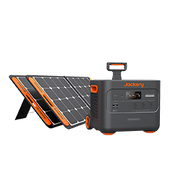
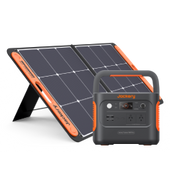
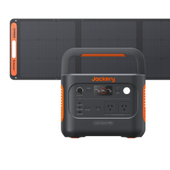
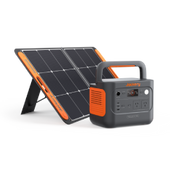
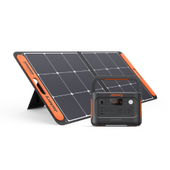

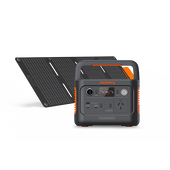
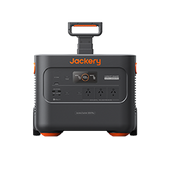
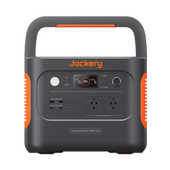
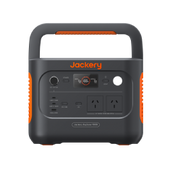
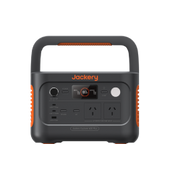
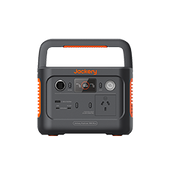
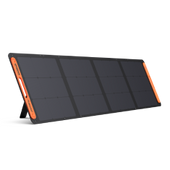
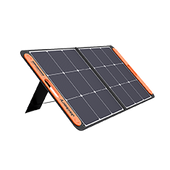
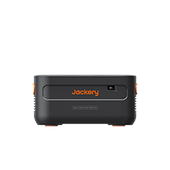
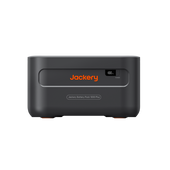
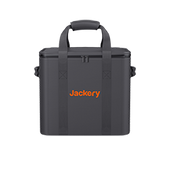
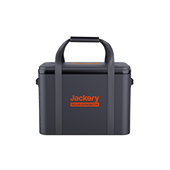
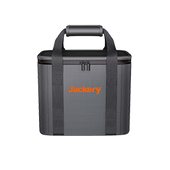
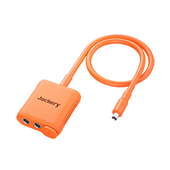
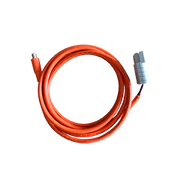
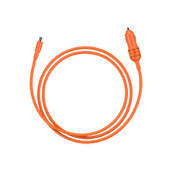
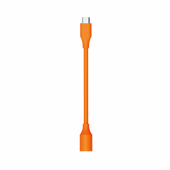
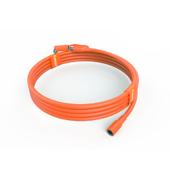


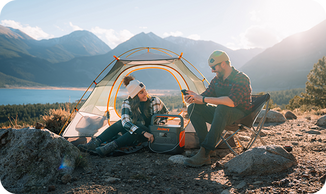
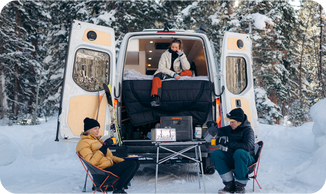

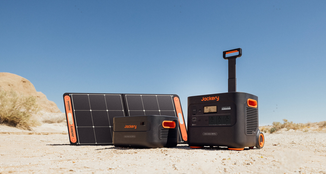
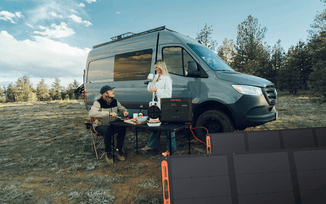
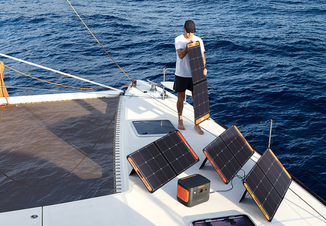



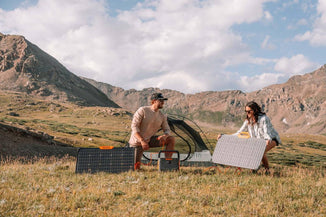
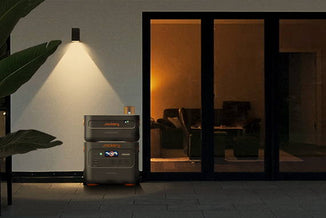

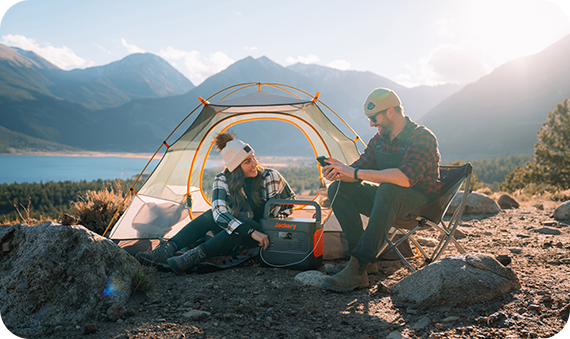
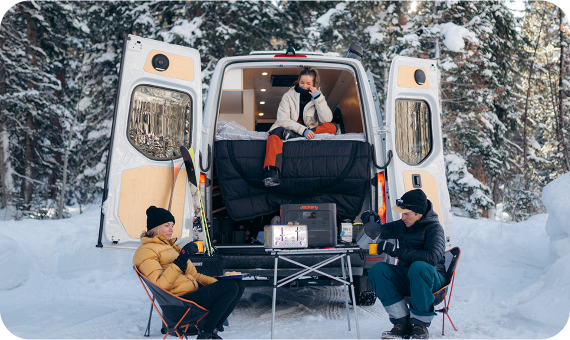
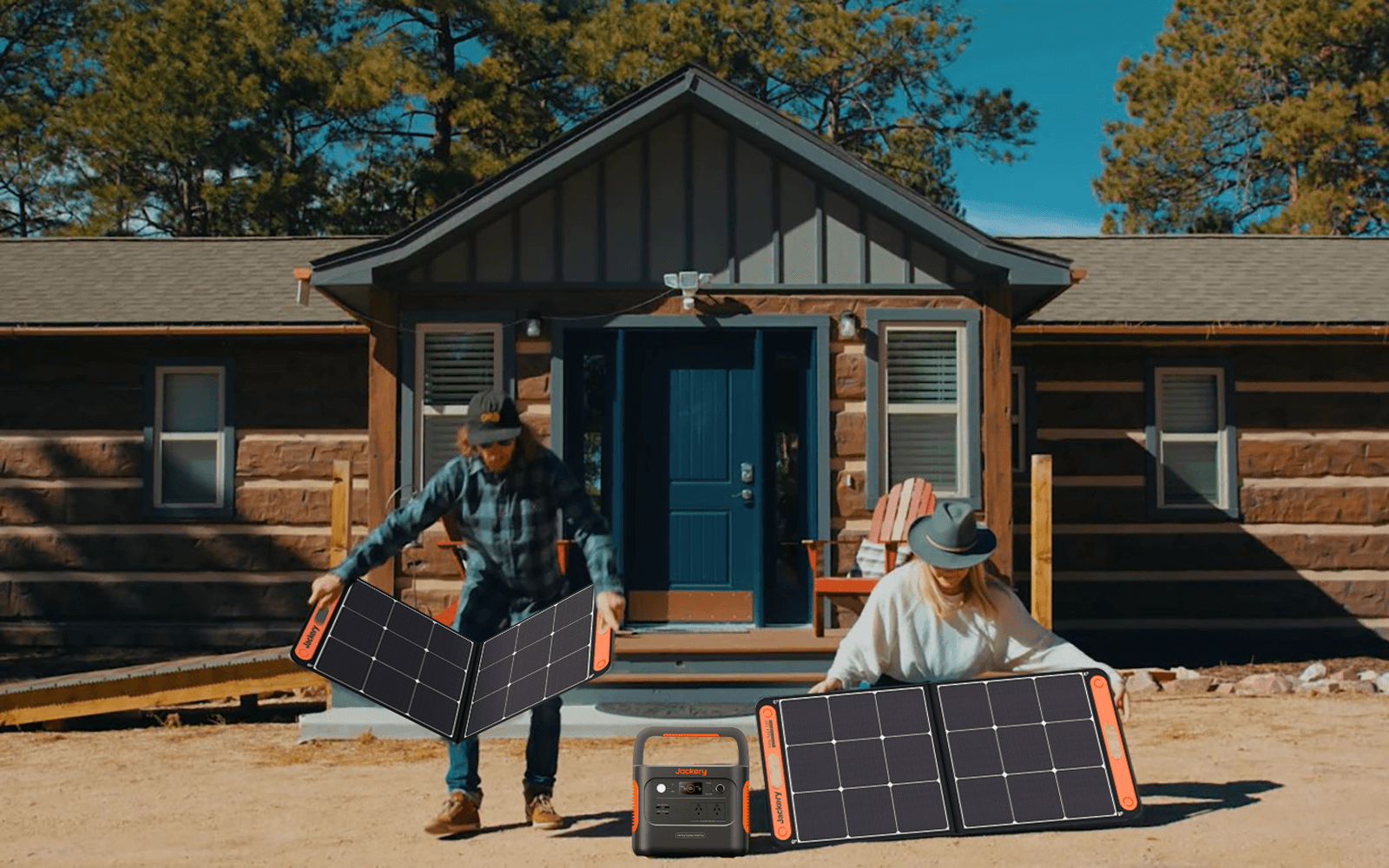
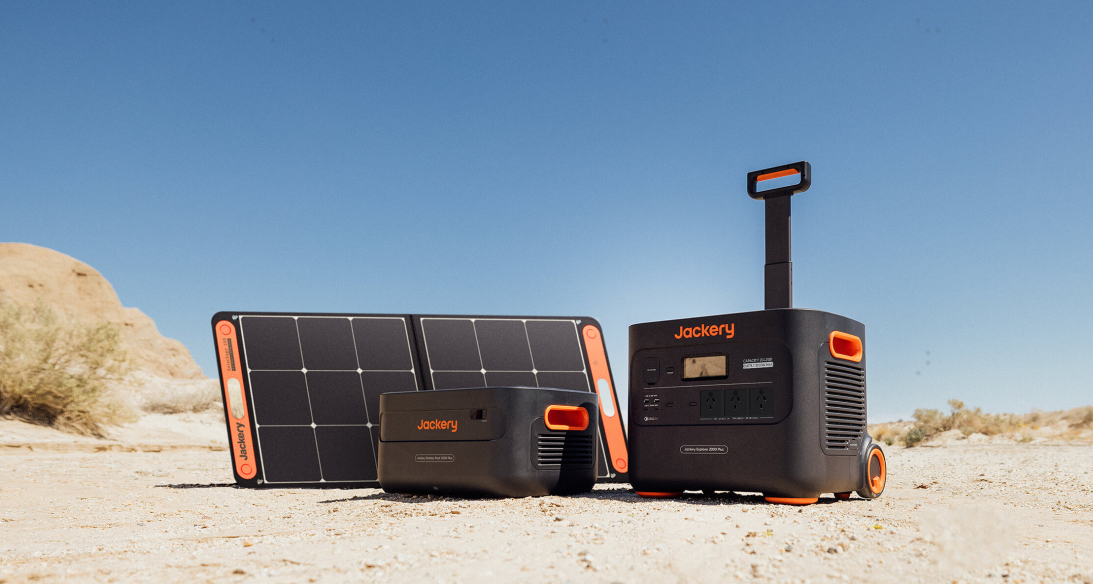
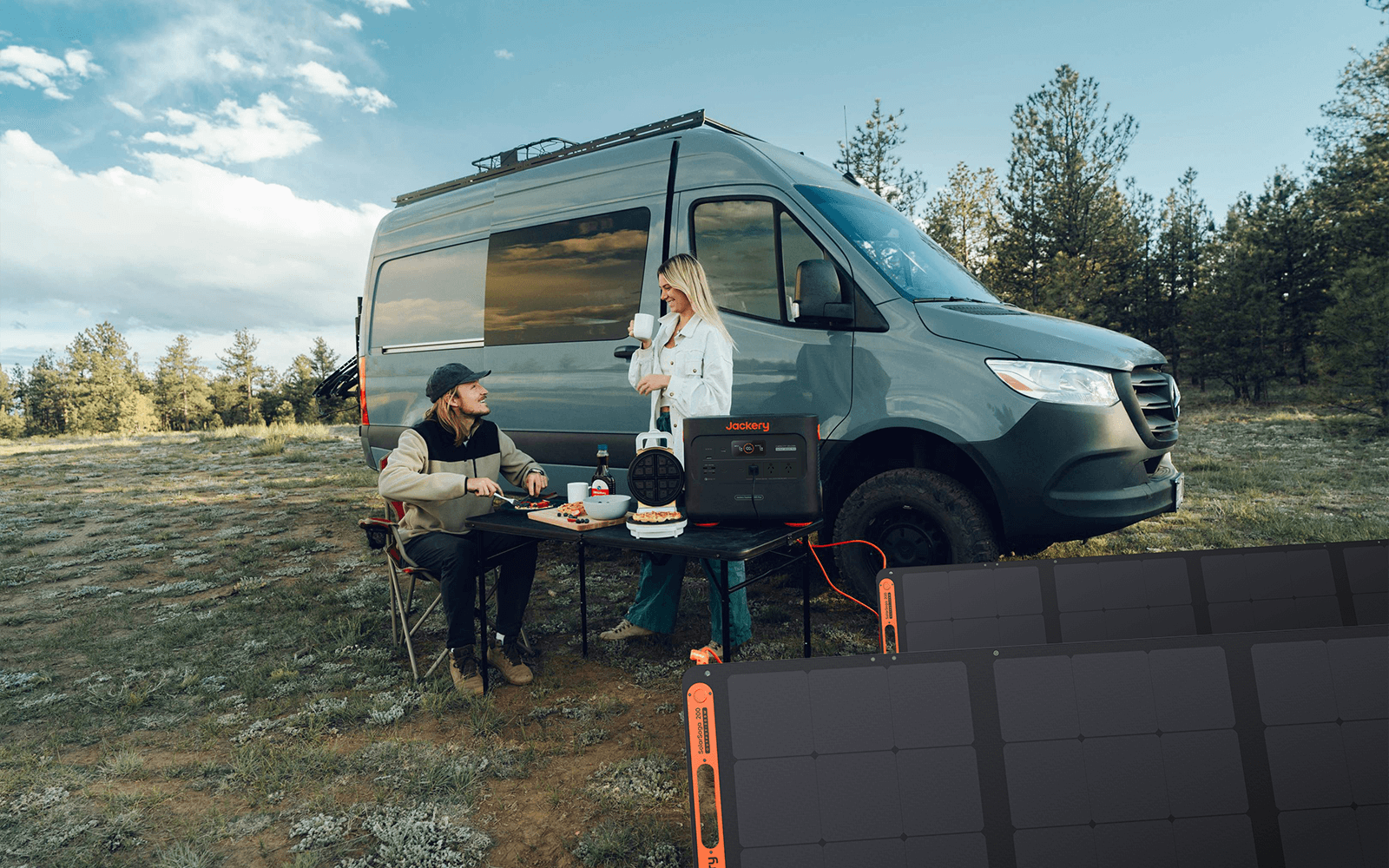
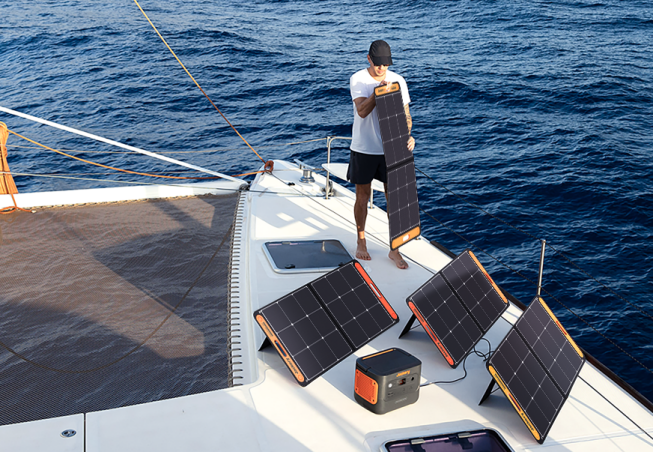

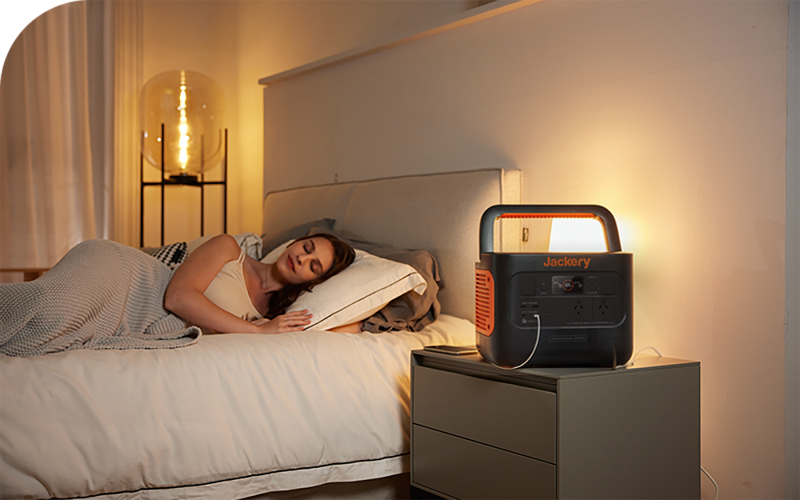
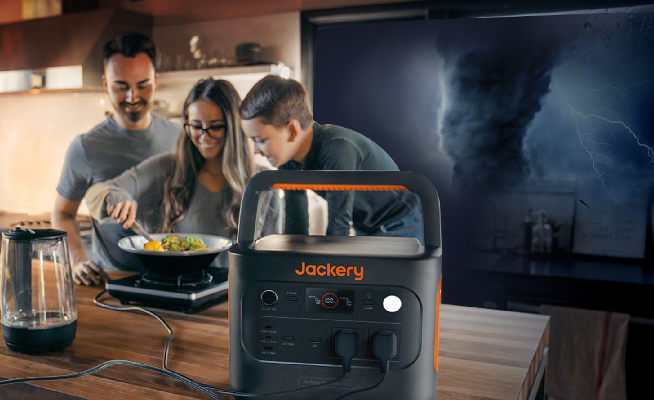
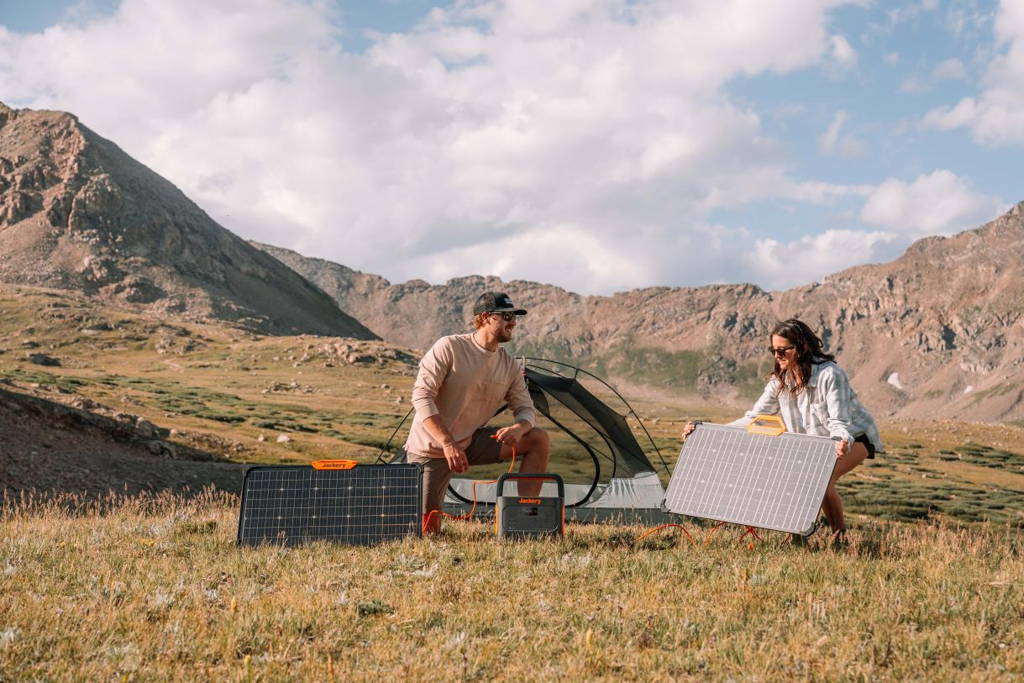
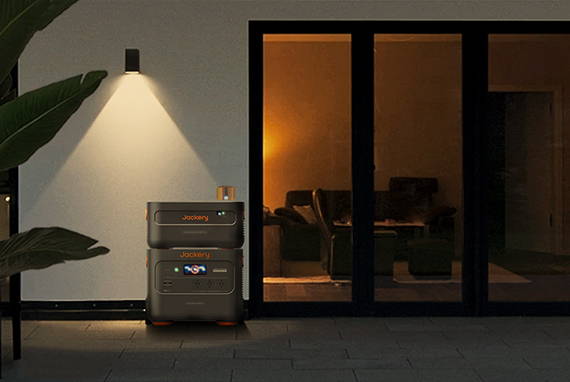

![How to Fly Fishing in Australia [Fly Fishing Guide]](http://au.jackery.com/cdn/shop/articles/how_to_fly_fishing_guide.png?v=1739414067)




